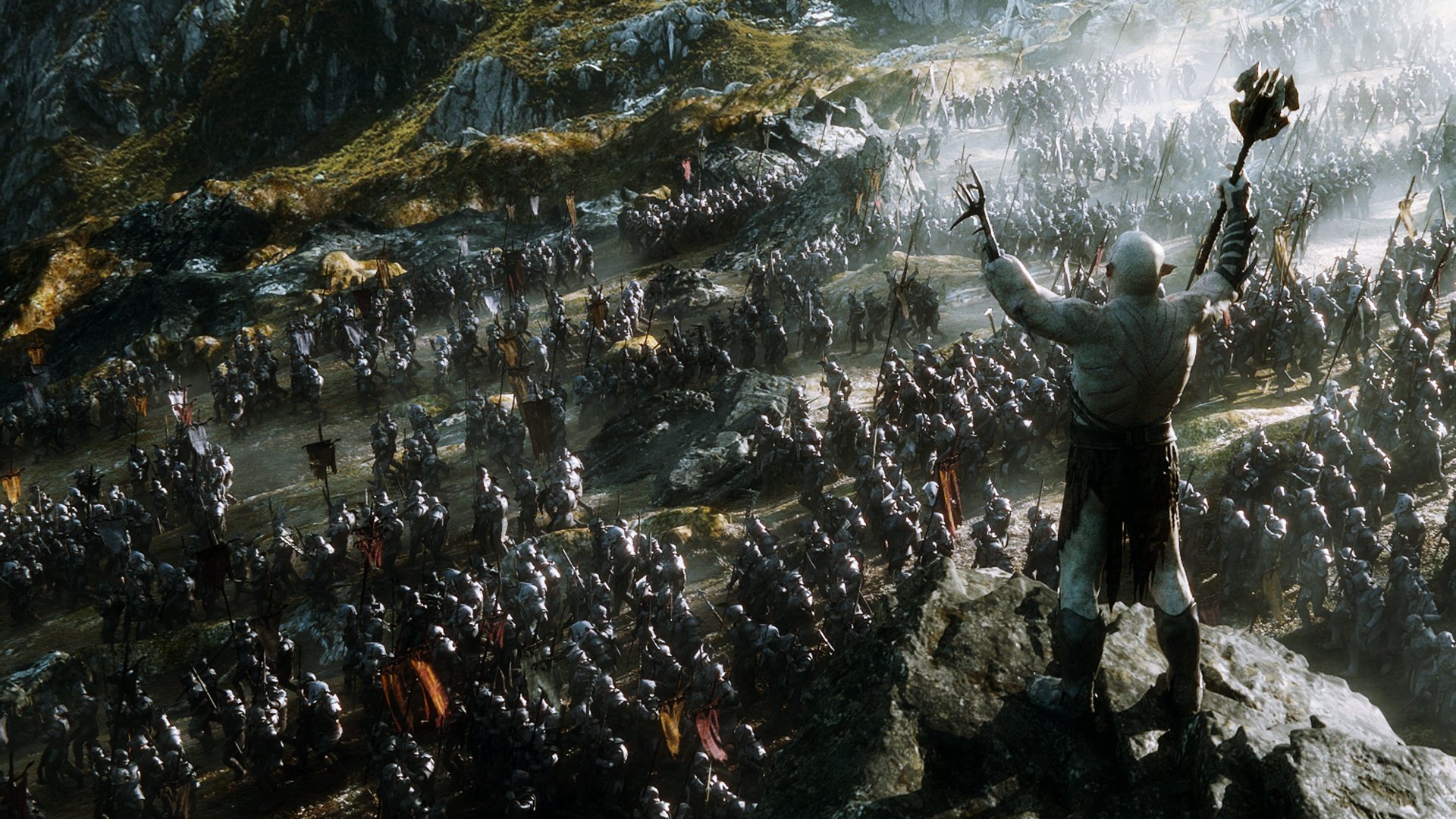Thursday, 1 January 2015
Closing the ring: "The Hobbit: The Battle of the Five Armies"
Well, we got there. Corporate mores being what they are, we had to pay three times over for the privilege, but we got there nevertheless. The view is anti-climactic, to say the least. Where Peter Jackson's Rings films will likely stand as peaks of early 21st century fantasy cinema, the Hobbit franchise will surely go down as a trough: far from an abject disaster, but bearing the notable disappointment that so much time, production money and disposable income should have been squandered on such an undernourished and listless vision. Maybe it's goblin fatigue; maybe it's the difficulty of capturing lightning in a bottle for a second time. Either way, one senses these two contrasting boxsets might come to serve as the basis for a lesson in the perils of adaptation: how the same writing team, holding to the same approach, can deliver a tremendous wealth of narrative and character detail with one hand, and with the other, an oddly underwhelming and unengaging experience, stretched ever thinner over three outsized canvasses.
By the end of the first Rings film - around which I was far from a gushing disciple - I could have turned in a two-page breakdown of all the key characters. I'd honestly struggle to form similar descriptions of the various hair and make-up jobs milling around here, beyond "Breathy Girl from Lost" (Evangeline Lilly), "Orlando Bloom lookalike" (Luke Evans), "Eyebrows" (Lee Pace; in one of The Battle of the Five Armies' few truly felicitous compositions, he's shown riding into battle on an elk whose antlers align perfectly with the camber of his own brows) and "Max Headroom lookalike" (Orlando Bloom, eerily and distractingly airbrushed). I'm sorry, talentspotters, but I still couldn't pick Richard Armitage out of a line-up, in the way I always could Viggo Mortensen or Sean Bean; and as for Martin Freeman's Bilbo, rarely can the eponymous protagonist of a major movie franchise have spent so much time hovering on the sidelines, waiting for his cue. Jackson has to make a conscious effort to clear the set and turn down the volume just to allow him to register.
Without any clear point of identification or discernible throughline, the viewer has been left to drift away from the action - just why are these armies fighting, anyhow? - and notice how the levels of quality control Jackson established in his first run at Tolkien have slipped over the intervening years. In burdening himself with more of everything - more locations, more extras, more CGI, more armies - the filmmaker seems to have let key elements go. The organic cinematography of the Rings films has here given way to something rote, blunt and 3D-enabling: gone are the verdant greens and snowy whites of the Middle Earth we were first introduced to, replaced by the sludgier greys and beiges of lesser prog LP covers. The effects contained within them now seem less special than arbitrary: who are the ghost knights we see Christopher Lee's Saruman tussling with around the halfway mark? If we don't know who these spectres are, why should we care who wins?
The random methodology applies to the editing, which for at least an hour here insistently chops away from any hint of momentum, and thereafter squanders a number of potentially rich character beats. It's as though Jackson has (understandably) wearied of such a massive undertaking, and just wants to return to Bag End and get his pipe and slippers on. He certainly isn't interested in pushing for any deeper thematic reading of these clashes between good and evil: we haven't been properly introduced to, let alone allowed to form any attachment to, the characters we're meant to mourn for here; all we've been given is a painstakingly literal rendering of everything Tolkien wrote down at some point or another. By this point in the series, we've been left watching various tribes of individuals with curious haircuts mouthing funny names at one another: the kind of fantasyland liability Guardians of the Galaxy got away with by treating the whole as an out-of-this-world pisstake.
In the end, the lesson could perhaps be imparted by reference to endings alone. The Return of the King famously had climax after climax, a consequence of Jackson's determination to give each of his beloved characters a proper send-off; such evident fondness allowed many of us to forgive the series for being so damn long. The Hobbit, from first frame to last, appears to have been governed by far more commercial instincts: after an hour of hacking and slashing - and effects work bought in by the yard - which is presumably meant to count as excellent VFM in the current marketplace, we're returned to a Bag End that is itself in the course of being divided up and sold off, and a final set-up for a sequel we've all already seen. Behind the closing credits, there sit early visualisation sketches of the key characters and locations, which are at once simpler yet more resonant and more affecting than anything we've observed in the preceding eight hours - three films that have found another director becoming tangled up in meetings and logistics, getting increasingly lost in his own grand design.
The Hobbit: The Battle of the Five Armies is now playing in cinemas nationwide.
Subscribe to:
Post Comments (Atom)

No comments:
Post a Comment